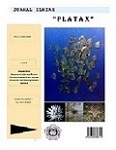Vulnerability of Miangas Island
DOI:
https://doi.org/10.35800/jip.7.1.2019.21546Abstract
There are several methods of analysis in knowing the vulnerability of a community. In the analysis to determine the vulnerability of Miangas island, the determinant vulnerability was used. Determinant vulnerability evaluation is very easy to use and simple. Therefore, the determinants of ordinary vulnerabilities use an assessment of resources that are carried out in full, so that results can be used as reference for management. One approach that is widely used in determining the index is the method of scaling parameters into certain values. These values are expressed as a score of a parameter. As done by (Tahir 2010) referred to in Doukakis (2005) and Rao et al. (2008), the Miangas Island analysis refers to the determination of the paramater scale and the weight of the vulnerability.
         The vulnerability index model constructed in this study consists of a static model of environmental vulnerability index and dynamic model of small island environmental vulnerability index. The static model of the environmental vulnerability index is intended to calculate the current vulnerability index (momentary), while the dynamic model of the environmental vulnerability index is used to predict the vulnerability dynamics in the future. In general, the values of IK-PPK = IE x IS / IAC = 4.29 x 2.35 / 1.6 = 6.30 By using these maximum and minimum values, the scale of assessment of the vulnerability of small islands is divided into 4 categories of vulnerability (Doukakis 2005), Miangas Island is obtained as follows; 0.20-6.04 = Low vulnerability, 6.05 -18.18 = Moderate vulnerability, 18.19-40.48 = High vulnerability (high), 40.49-76.00 = Very high vulnerability (very high). That there is a vulnerability with a moderate position.
Keywords: Â vulnerability, index, determinant, Miangas
ABSTRAK
Ada beberapa metode analisis dalam mengetahui kerentanan suatu komunitas. Dalam analisis untuk mengetahui kerentanan pulau Miangas maka digunakan kerentanan determinan. Evaluasi kerentanan determinan sangat mudah digunakan dan sederhana. Oleh karna itu, determinan kerentanan biasa menggunakan assessment terhadap sumberdaya yang dilakukan secara utuh, sehingga hasil dapat dijadikan bahan acuan terhadap pengelolaan.   Salah satu pendekatan yang banyak digunakan dalam penentuan indeks adalah metode penskalaan parameter ke dalam nilai-nilai tertentu. Nilai-nilai tersebut dinyatakan sebagai nilai skor dari suatu parameter. Sebagaimana yang dilakukan oleh (Tahir 2010) yang diacu dalam Doukakis (2005) dan Rao et al. (2008) maka pada analisis Pulau Miangas mengacu penentuan skala paramater dan bobot kerentanan tersebut.
Model indeks kerentanan yang dikonstruksi dalam penelitian ini terdiri dari model statis indeks kerentanan lingkungan dan model dinamik indeks kerentanan lingkungan pulau-pulau kecil. Model statis indeks kerentanan lingkungan dimaksudkan untuk menghitung indeks kerentanan saat ini (sesaat), sedangkan model dinamik indeks kerentanan lingkungan digunakan untuk melakukan prediksi dinamika kerentanan pada masa yang akan datang. Secara umum didapatkan nilai IK-PPK = IE x IS/IAC = 4,29 x 2,35 /1,6 = 6,30. Dengan menggunakan nilai maksimum dan minimum tersebut, skala penilaian tingkat kerentanan pulau-pulau kecil dibagi menjadi 4 kategori kerentanan (Doukakis 2005) maka Pulau Miangas didapatkan sebagai berikut; 0.20-6.04 = Kerentanan rendah (low), 6.05-18.18 = Kerentanan sedang (moderate), 18.19-40.48 = Kerentanan tinggi (high), 40.49-76.00 =        Kerentanan sangat tinggi (very high). bahwa ada kerentanan dengan posisi moderate.
Kata kunci : Â kerentanan, determinan, indeks, Miangas
Downloads
Published
How to Cite
Issue
Section
License
COPYRIGHT
Authors who publish with this journal agree to the following terms:
Authors hold their copyright and grant this journal the privilege of first publication, with the work simultaneously licensed under a Creative Commons Attribution License that permits others to impart the work with an acknowledgment of the work's origin and initial publication by this journal.
Authors can enter into separate or additional contractual arrangements for the non-exclusive distribution of the journal's published version of the work (for example, post it to an institutional repository or publish it in a book), with an acknowledgment of its underlying publication in this journal.
Authors are permitted and encouraged to post their work online (for example, in institutional repositories or on their website) as it can lead to productive exchanges, as well as earlier and greater citation of the published work (See The Effect of Open Access).




















